Kingdom Animalia Clade †Ichthyosauromorpha Clade †Nasorostra Phylum Chordata | Class Reptilia Clade †Ichthyosauriformes Species †C. lenticarpus Rank Genus | |
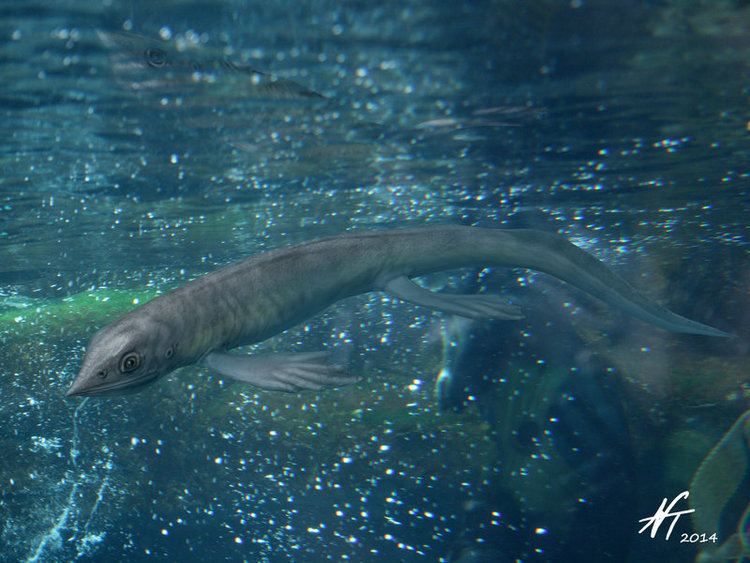 | ||
Similar Chaohusaurus, Ichthyopterygia, Sclerocormus, Hupehsuchus, Utatsusaurus | ||
cartorhynchus lenticarpus
Cartorhynchus is an extinct genus of basal ichthyosauriform marine reptile that lived during the early Triassic period. Fossils have been found in eastern China and were unearthed from rocks in 2011. Those rocks were laid down as marine sediments about 248 million years ago. The only well-preserved fossil is quite complete, with only a portion of the tail missing. When alive, the creature was probably about 40 cm (16 in) long — about the size of a large lizard — and weighed about 2 kg (4.4 lb).
Contents
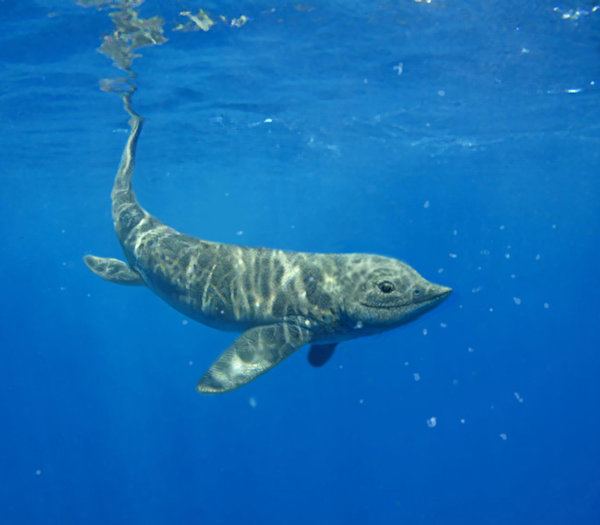
Etymology
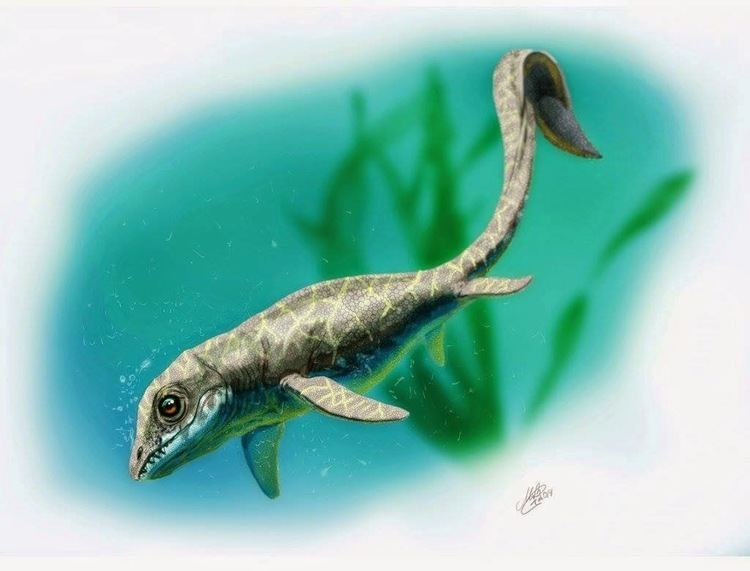
The name of the only described species of the genus, Cartorhynchus lenticarpus, comes from the Greek words for “short snout” (a feature of the fossil) and Latin words for “flexible wrist.”
Description
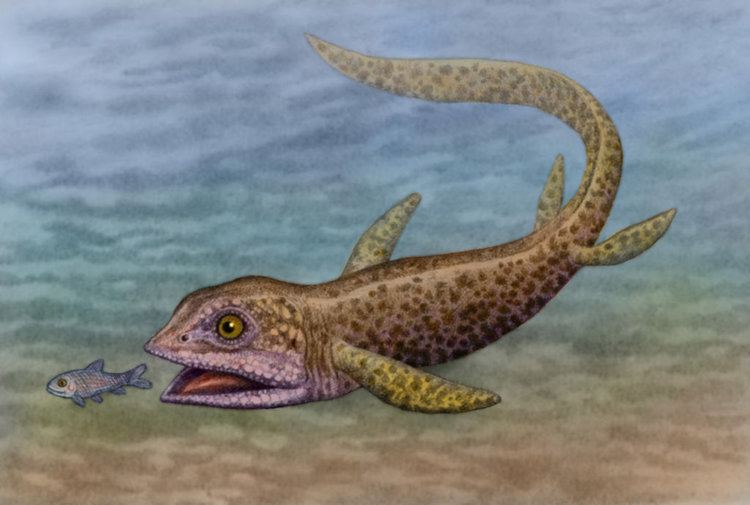
The vertebrae and ribs are thick-walled and well mineralized, so the creature was probably an adult when it died. But most bones in the forelimbs were small and widely separated, a sign that the forelimbs were likely cartilage-filled flippers and not legs. The creature’s hindlimbs were reduced in size, another adaptation for life at sea. The creature’s heavy bones, like a scuba diver’s weight belt, counteracted natural buoyancy and probably enabled it to forage in shallow coastal waters. Yet Cartorhynchus could probably get around well on land using its flippers, just as seals and sea lions do today.
Lifestyle

Unlike the more derived ichthyosaurs, Cartorhynchus was probably a suction feeder, basically vacuuming up soft-bodied prey. A lack of fossilized prey near the specimen supports this theory, since soft-bodied animals are not preserved in rock.
Significance
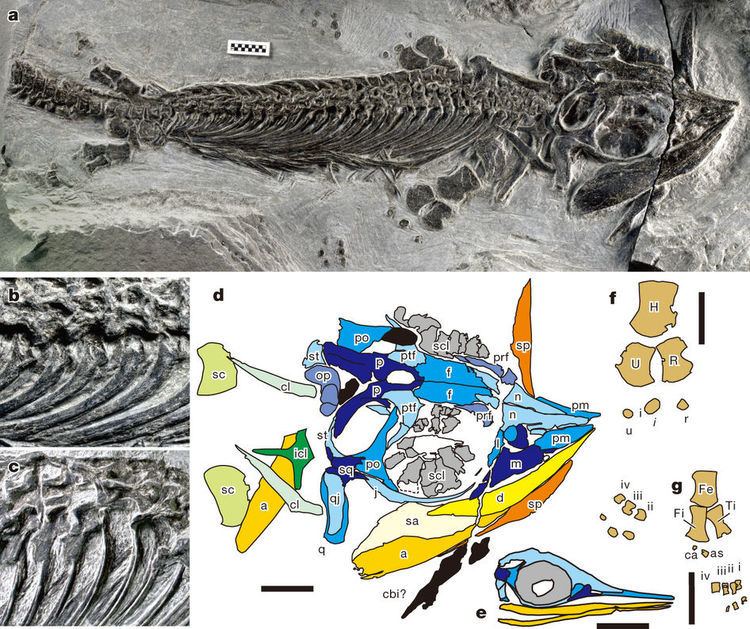
The origin of ichthyosaurs has been a mystery for centuries. Even the oldest known genera were already strongly aquatic. However, Cartorhynchus lenticarpus is considered to be close to the ancestry of the Ichthyopterygia, the ichthyosaurs and their immediate relations, and may shed light on the origin of this enigmatic clade of marine reptiles. Naming author Ryosuke Motani suggested the clade Ichthyosauriformes consisting of the Ichthyopterygia and the more basal Cartorhynchus. Cartorhynchus also indicates that the enigmatic Hupehsuchia were closely related. Motani combined the Ichthyosauriformes and the Hupehsuchia into the Ichthyosauromorpha.
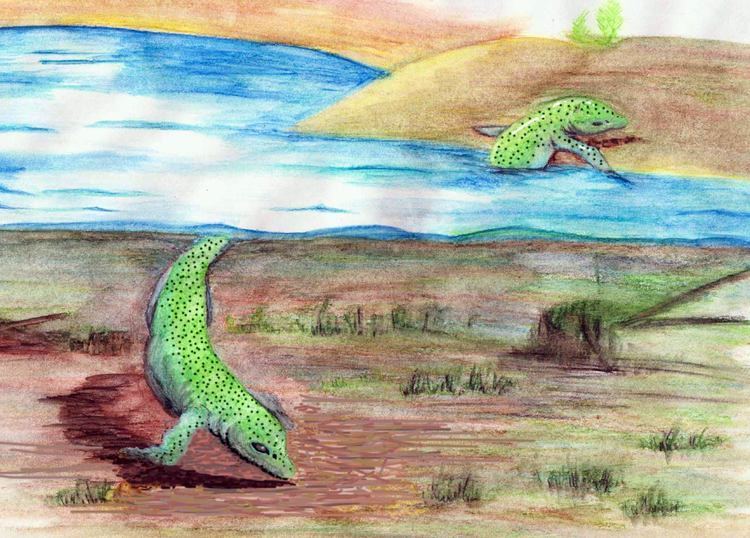
The new fossil improves understanding of how rapidly ichthyosaurs arose during the aftermath of the Permian-Triassic extinction event 252 million years ago, in which more than 90 percent of marine species died out. Scientists have long wanted to know how long it took for animals and plants to bounce back after that catastrophic die-off. Cartorhynchus's discovery shows it took ichthyosaurs four million years to emerge in China before rapidly spreading worldwide.
